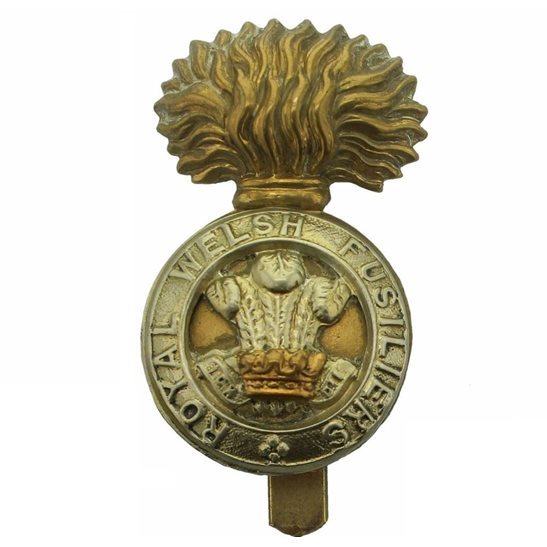Personal Details
Born: In 1894 in Whitchurch, Shropshire and was baptised on 7 October the same year in St. Alkmund’s Parish Church.
Family: He was the second of three children born to George Grindley, a railway shunter, and his wife Ellen. No marriage can be traced for George junior.
Residence: At the time of his baptism the family were living in West End, Whitchurch; in 1901 and 1911 he was living with his parents and siblings at 58 Oddfellows Cottages, Whitchurch. His address at the time of his death was 58 West End, Whitchurch (these three dwellings are likely to be the same).
Employment: In 1911 he was a newsboy.
Died: 5 February 1923, killed in action whilst serving with the Royal Welsh Fusiliers at Tauda China, Waziristan, India.
Military Details
Regiment: Royal Welsh Fusiliers
Rank: Company Sergeant Major
Service Number: 37791
Date of Enlistment: Not known
Date of Discharge: Not known
Reason for Discharge: Not known
Other Information: George re-enlisted in the Royal Welsh Fusiliers (number 4179610) on 11 March 1919, going on to lose his life in action in Waziristan, India. He is commemorated on the Royal Welsh Fusiliers Waziristan War Memorial inside St. Giles’ Parish Church, Wrexham, Denbighshire, Wales.
George was awarded the Military Medal (London Gazette 14 May 1919) and the Campaign Medals (British War medal and Victory medal)

The British War Medal (also known as 'Squeak') was a silver or bronze medal awarded to officers and men of the British and Imperial Forces who either entered a theatre of war or entered service overseas between 5th August 1914 and 11th November 1918 inclusive. This was later extended to services in Russia, Siberia and some other areas in 1919 and 1920. Approximately 6.5 million British War Medals were issued. Approximately 6.4 million of these were the silver versions of this medal. Around 110,000 of a bronze version were issued mainly to Chinese, Maltese and Indian Labour Corps. The front (obv or obverse) of the medal depicts the head of George V. The recipient's service number, rank, name and unit was impressed on the rim.
The Allied Victory Medal (also known as 'Wilfred') was issued by each of the allies. It was decided that each of the allies should each issue their own bronze victory medal with a similar design, similar equivalent wording and identical ribbon. The British medal was designed by W. McMillan. The front depicts a winged classical figure representing victory. Approximately 5.7 million victory medals were issued. Interestingly, eligibility for this medal was more restrictive and not everyone who received the British War Medal ('Squeak') also received the Victory Medal ('Wilfred'). However, in general, all recipients of 'Wilfred' also received 'Squeak' and all recipients of The 1914 Star or The 1914/1915 Star (also known as 'Pip') also received both 'Squeak' and 'Wilfred'. The recipient's service number, rank, name and unit was impressed on the rim.

